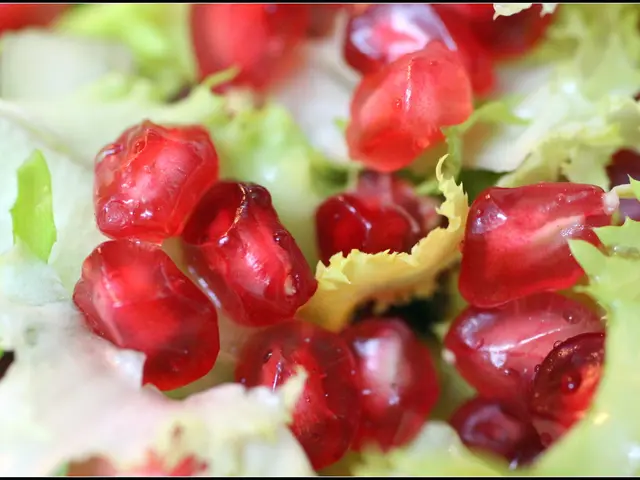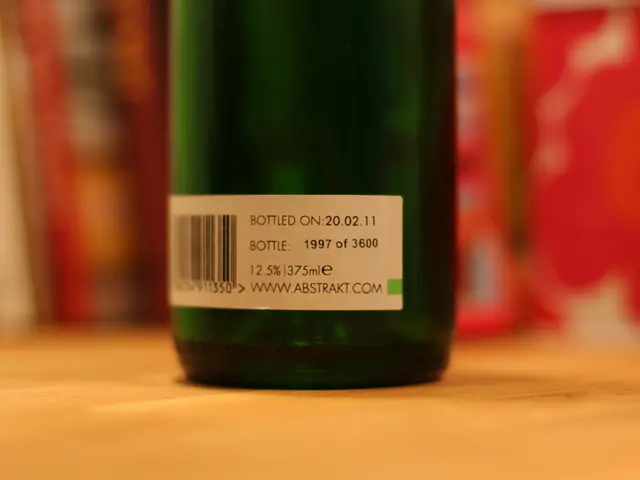Spotting Age Imperfections versus Skin Cancer: A Guide on Distinguishing Signs
Taking a Stroll Through Skin Spots and Skin Cancer
Get the Scoop on the Differences and How to Spot 'Em
As we age, our skin may develop marks that resemble skin cancer or its precancerous siblings. But don't fret! Before you rush off to the dermatologist, let's explore the key differences between age spots and skin cancer to help you better identify their signs and when you might need medical advice.
Age Spots vs. Skin Cancer: What's the Difference?
Age spots, also known as solar lentigines or liver spots, are tiny patches darker than your surrounding skin. They are usually flat, smooth, and don't itch or feel crusty. Age spots form as our bodies produce excess melanin to protect our skin from sun damage. Most common on light skin, age spots typically appear from middle age onward [1].
Skin cancer, on the other hand, is a type of cancer. Like age spots, skin cancer often develops on sun-exposed areas due to UV radiation damage. Skin cancer arises when UV radiation or other factors harm skin cells, causing them to multiply at a rapid rate [1]. Unlike age spots, skin cancer is potentially dangerous and can spread to other parts of the body.
Here are Some Signs that a Skin Growth May be Cancerous:
- Asymmetrical shape
- Blurred, ragged, or irregular edges
- Colors: multiple colors on the same spot, pink, blue, purple, black, or brown
- Changes in size, color, or shape
- Pain, itching, oozing, or bleeding
- Crusty, scaly, or scabby patches
- Elevated edges that lower in the middle [2]
Don't Worry, Age Spots Can't Transform into Cancer, But Actinic Keratosis Might
Actinic keratosis is a precancerous growth that may appear similar to age spots. This condition forms due to UV radiation damage and, if left untreated, could potentially evolve into skin cancer. Keep an eye out for rough, scaly patches that may appear on sun-exposed areas of your skin and consult a healthcare professional if you spot signs of skin cancer or actinic keratosis [3].
Recognizing Symptoms and Signs:
Recognizing the symptoms between age spots and skin cancer can help identify which condition is occurs.
Age Spot Symptoms
Age spots are:
- flat and smooth
- yellow, brown, or gray
- defined with clear borders
- varying in size from a few millimeters to centimeters
- found on sun-exposed areas, such as the face, hands, shoulders, feet, arms, and back [3]
Age spots may transform in winter but get more pronounced in summer when exposed to sunlight.
Skin Cancer Symptoms
Skin cancer symptoms can vary depending on factors such as the type of skin cancer.
Potential signs of cancerous skin growths include raised, red patches, or pale or yellow firm patches similar to scars. Additional warning signs may include pain, itching, oozing, or bleeding [3].
Remember to monitor any new or changing marks on your skin, consult a healthcare professional if you notice unusual skin changes, and focus on early detection to facilitate treatment.
From Exam to Diagnosis and Treatment
A doctor can diagnose age spots through a physical examination that considers the spot's appearance, texture, and placement. If the doctor is unsure, they may perform a skin biopsy to test for skin cancer or precancerous conditions [3].
Treatment for age spots depends on the individual's preferences. Some possible treatments include creams, lotions, or cosmetic procedures such as laser therapy, cryosurgery, microdermabrasion, or chemical peeling [1].
Skin cancer treatment varies depending on factors like the type and stage of cancer. Generally, dermatologists may surgically remove basal cell and squamous cell cancers. Treatment for skin cancer and actinic keratosis can include topical therapies, radiation therapy, chemotherapy, immunotherapy, and systemic medication [1][3].
The Bottom Line:
Familiarize yourself with the differences between age spots, skin cancer, and actinic keratosis to evaluate potential skin conditions more effectively. Monitor new or changing marks on your skin, consult a healthcare professional regularly, and promote early detection and successful treatment. So grab your hat and sunscreen, and enjoy the journey through your skin's fascinating world!
[1] "Skin Cancer" Mayo Clinic, (2021), https://www.mayoclinic.org/diseases-conditions/skin-cancer/symptoms-causes/syc-20353021
[2] "Skin Cancer Signs and Symptoms" American Cancer Society, (2018), https://www.cancer.org/cancer/skin-cancer/about/skin-cancer-signs-and-symptoms.html
[3] "Age Spots" Mayo Clinic, (2021), https://www.mayoclinic.org/diseases-conditions/age-spots/symptoms-causes/syc-20354255
[4] "Age Spots" American Academy of Dermatology, (n.d.), https://www.aad.org/public/diseases/a-z/age-spots-0
[5] "Actinic Keratosis" Mayo Clinic, (2020), https://www.mayoclinic.org/diseases-conditions/actinic-keratosis/symptoms-causes/syc-20375853
- As we age, our skin may develop marks called age spots, which are flat and smooth, typically yellow, brown, or gray, and can be found on sun-exposed areas.
- Skin cancer, on the contrary, is a type of cancer that arises when UV radiation or other factors harm skin cells, causing them to multiply at a rapid rate and potentially be dangerous.
- Signs that a skin growth may be cancerous include asymmetrical shape, blurred or irregular edges, multiple colors, changes in size or shape, pain, itching, oozing, or bleeding.
- Actinic keratosis is a precancerous growth that may appear similar to age spots and could potentially evolve into skin cancer if left untreated.
- Recognizing the differences between age spots and skin cancer can help identify which condition is occurs, with age spots usually flat and smooth, and skin cancer potentially raised, red, or scar-like.
- Early detection and successful treatment are facilitated by monitoring new or changing marks on the skin and consulting a healthcare professional for regular check-ups.
- Treatment for age spots depends on the individual's preferences, while skin cancer treatment varies depending on factors like the type and stage of cancer.
- To evaluate potential skin conditions more effectively, it's essential to familiarize yourself with the differences between age spots, skin cancer, and actinic keratosis, and promote sun safety, such as wearing hats and sunscreen, to reduce the risk of skin damage and cancer.







